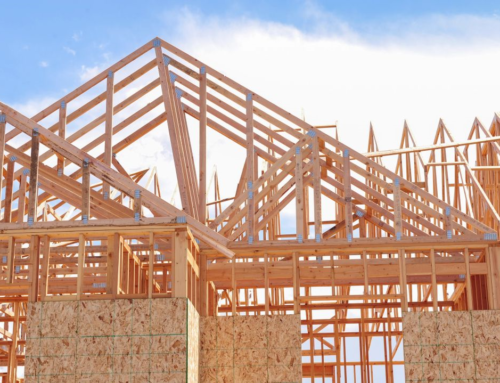Are you thinking about building a new home? You may be worried about the mortgage qualification process. Instead, consider a construction-to-permanent loan.
This type of loan eliminates the need to apply for a home loan in the future. When you qualify for the loan, the lender will find a builder to build your home.
You don’t have to make full payments during the construction phase. You’ll only pay the monthly premium when you move in.
This article will explore construction-to-permanent loans in greater depth. Let’s explore.
The Benefits of a Bundled Loan
In most cases, financing for new construction requires a separate loan. Construction-to-permanent loans allow you to bundle construction and home loans. A combination of both loan types offers the following advantages:
- Less paperwork
- Fewer qualification hurdles
- Closing cost reductions
When dealing with closing costs, lenders can save you thousands of dollars under a single closing. Above all, you’ll receive your loan faster as you go through one application process.
Keeping Track of Expenses
Lenders also disburse the funds throughout each phase of the project. For example, the funds may be distributed according to the following steps:
- Framing
- Foundation
- Electrical
- Plumbing
This process allows lenders to keep track of all expenses. You’ll also save additional money since you won’t have to pay the mortgage until you move into your new home. It’s a great option if you’re currently renting a home but cannot make a full mortgage payment during the construction phase.
More importantly, you only make payments on the disbursement amounts instead of the entire balance.
Interest Savings
Additionally, you can save money up front because you’ll only pay interest during the construction phase.
Interest-only payments are lower and will spare you the burden of making full payments immediately. A smaller monthly payment is also ideal if the construction project takes longer than anticipated.
When it comes to loan interest rates, this type of loan usually comes with a locked rate. A steady interest rate allows you to make predictable payments, with no sudden payment hikes along the way.
Overall, the loan is also more flexible.
Easy Process
In terms of flexibility, lenders usually don’t require borrowers to meet an additional step during the transition process. When the loan becomes a mortgage, you begin making payments on the interest and principal immediately.
Plus, you can choose a fixed-rate mortgage or an adjustable-rate mortgage. However, the choices depend on lending standards. For other types of construction loans, you’ll have to apply for a separate mortgage.
Construction Loan Variations
In addition to construction-to-permanent loans, there are two other types of construction loans to consider: renovation loans and construction loans. A construction-only loan only covers the cost of building a new house alone.
The builder must pay the loan in full when they complete the home. Since the average home takes a year or less to build, borrowers have a short window to pay off the balance.
Further, the borrower must take out another mortgage. Applying for a separate mortgage is a risky endeavor because you may not qualify for it. Many borrowers who qualify for a construction loan may not qualify for a mortgage:
- Example: Perhaps you lost your job or dealt with an income reduction during the project. Lenders will only consider your most recent financial history, even though you qualified previously.
Conversely, renovation loans allow borrowers to combine construction and renovation expenses into a single loan. The loan balance stems from the home’s value after project completion.
This option is primarily for owners who want to fix and flip a home. Additionally, renovation homes only apply to an existing home.
Transition Loan Considerations
Despite the numerous advantages, you should be mindful of the potential drawbacks. In many cases, transition loans come with higher interest rates than a traditional mortgage. Since the construction loan converts to a mortgage automatically, lenders may charge a higher rate.
Additionally, the standards are usually higher. The high standards stem from the flexibility of the loan package. Therefore, lenders may impose a higher credit threshold. You may also need a minimum down payment of 20% to qualify.
Also, the costs may go up during the construction process, increasing the balance of the loan. For example, you may decide to upgrade the cabinets suddenly.
Moreover, you could face extensive delays. Lenders may require inspections and/or appraisals before and after the building process. You could face additional delays if the house fails inspection.
Your funds may even remain in limbo until the home passes inspection. In some cases, you could face penalties if the project encounters repeated delays.
Despite the drawbacks, the right lender will give borrowers fair rates and affordable terms. Further, you can find a flexible lender who doesn’t impose arbitrary barriers that could delay the project.
Overall, a trustworthy dealer should tailor the loan to your needs. Above all, they should disclose the disbursement process and maintain steady communication throughout the process.
Is a Construction-to-Permanent Loan Right for Me?
A construction-to-permanent loan will save you time and money. You don’t have to apply for a separate mortgage with a transition loan. Under this type of loan, the construction loan will transition into a mortgage when you move in.
You can also lock in an interest rate, and the rate won’t change throughout the mortgage. A transition loan also has fewer steps and gives you a single closing date.
Are you interested in financing for new construction? Click here to learn how we can help you.





Stay In Touch